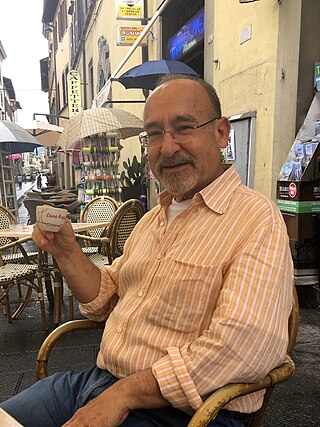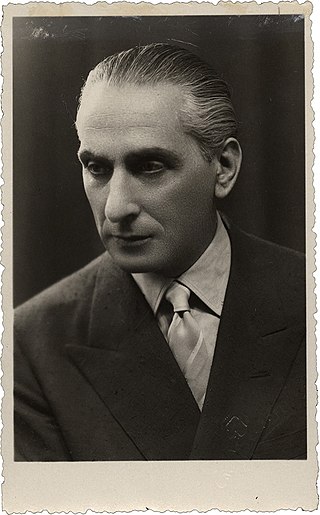Profile
In 1986, at the age of 23, he built his first piano. [2] In 1991, at the age of 28, he presented his first completely handmade concert-grand piano at the European congress ‘Europiano’. [3]
Luigi Borgato personally selects the woods and chooses all the materials and components for the construction of his pianos. [4] [5] He is also a technician-tuner and fine-tunes his own instruments for concerts and recordings assisting internationally renowned pianists. The pianos he built have been appreciated by internationally renowned artists such as: Radu Lupu, [6] András Schiff, Vladimir Ashkenazy, [7] Rosalyn Tureck, Jerome Rose, Lazar Berman, Maria João Pires, Ingolf Wunder, Roberto Prosseda, [8] Martin Berkofsky, Antonio Ballista, Bruno Canino, Michele Campanella, Roberto Giordano, Massimiliano Ferrati, Semion Balshem, Jean Guillou, [2] Charlemagne Palestine, Cameron Carpenter, Johannes Skudlik, Giorgio Carnini, Francesco Libetta, [2] Mirco Bruson [9]
Patents
Luigi Borgato registered various patents. His first patent in 1991 provided the upper register of the keyboard with four strings struck per note in the 44 keys of the upper register and changes to the design of the iron frame. [2]
In 2000, he registered a second patent. Inspired by compositions written for pianos with pedalboards, he designed and built a new instrument called the Doppio Borgato, which is the first double concert-grand piano with pedalboard constructed in modern times. [10] [11] [12]
In August 2017 he produced a large "stage" concert grand piano called "Borgato Grand Prix 333", 3.33 metres (10.9 ft) long.
Piano construction is by now a rather conservative area; most of the technological advances were made by about 1900, and indeed it is possible that some contemporary piano buyers might actually be suspicious of pianos that are made differently from the older kind. Yet piano manufacturers, especially the smaller ones, are still experimenting with ways to build better pianos.

Sylvano Bussotti was an Italian composer of contemporary classical music, also a painter, set and costume designer, opera director and manager, writer and academic teacher. His compositions employ graphic notation, which has often created special problems of interpretation. He was known as a composer for the stage. His first opera was La Passion selon Sade, premiered in Palermo in 1965. Later operas and ballets were premiered at the Teatro Comunale di Firenze, Teatro Lirico di Milano, Teatro Regio di Torino and Piccola Scala di Milano, among others. He was artistic director of La Fenice in Venice, the Puccini Festival and the music section of the Venice Biennale. He taught internationally, for a decade at the Fiesole School of Music. He is regarded as a leading composer of Italy's avantgarde, and a Renaissance man with many talents who combined the arts expressively.

Nazzareno Carusi is an Italian pianist. A pupil of Alexis Weissenberg and Victor Merzhanov, he also studied with Lucia Passaglia and Adriano Vendramelli. The classical studies with Ugo Maria Palanza and Vittoriano Esposito and the meetings with the Dominican theologian F. Innocenzo Colosio, pupil of Réginald Garrigou-Lagrange, and Isaac Stern were decisive for his formation.

Salvatore Sciarrino is an Italian composer of contemporary classical music. Described as "the best-known and most performed Italian composer" of the present day, his works include Quaderno di strada (2003) and La porta della legge (2006–08).

The pedal piano is a kind of piano that includes a pedalboard, enabling bass register notes to be played with the feet, as is standard on the organ.

Roberto Prosseda is an Italian classical pianist.

Teodulo Mabellini was an Italian composer.
Nicola Campogrande is an Italian composer and music journalist. He is the artistic director of the MITO SettembreMusica festival. He writes for the newspaper Corriere della Sera. His music is published exclusively by Breitkopf & Härtel.

Gruppo di Improvvisazione Nuova Consonanza was an avant-garde free improvisation group considered the first experimental composers collective.

Doppio Borgato is a Pedal piano made by joining a regular concert grand with a second piano, activated by a pedal board with 37 pedals, similar to that of the organ. Designed and manufactured by Luigi Borgato, it was patented in 2000.
Stradivarius Records, Italian Casa Discografica Stradivarius is a Milan based independent Italian record label specializing in early music and contemporary classical music. The record label was originally based from a shop in the Via Stradivari, but the shop is now located in the Via Sormani, Cologno Monzese. The label has collaborated with the Milan Conservatory in production of its recordings.

Cosimo Damiano Lanza is an Italian pianist, harpsichordist and composer.

Domenico Morgante is an Italian musicologist, organist and harpsichordist.

The Conservatory "Arrigo Pedrollo" of Vicenza, Italy, is a tertiary music institution. It is located in Vicenza, within the grounds of the San Domenico convent.

The Conservatorio di Musica Santa Cecilia is a state conservatory in Rome.

Alessandro Felici was an Italian composer and violinist, not to be confused with his contemporary, Roman composer Felice Alessandri.
Luigi Ferdinando Casamorata was an Italian composer and music critic.

Mauro Cardi is an Italian composer.

Antonio Veretti was an Italian composer.
Riccardo Gandolfi was an Italian composer and music critic.
This page is based on this
Wikipedia article Text is available under the
CC BY-SA 4.0 license; additional terms may apply.
Images, videos and audio are available under their respective licenses.















